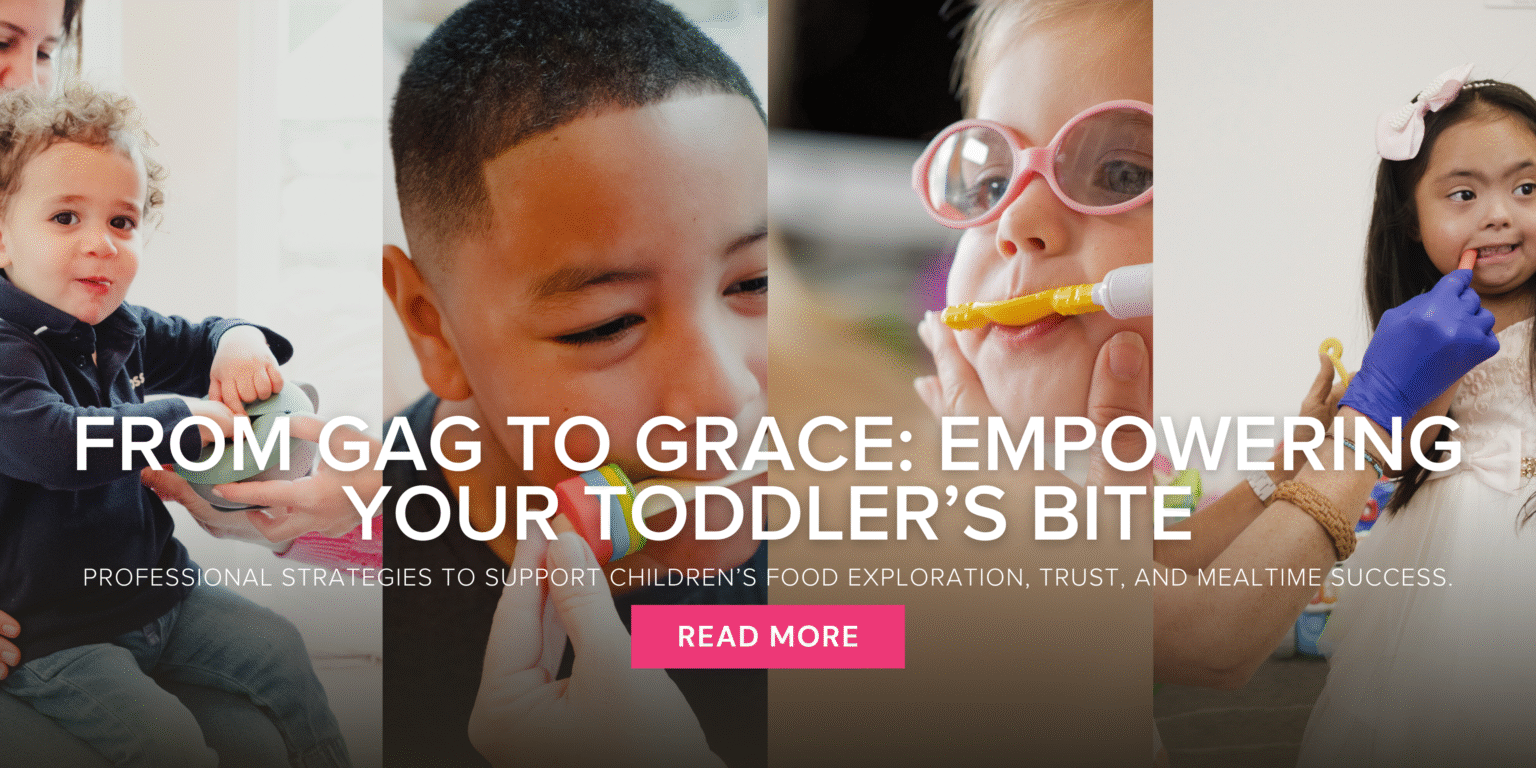Welcome to this month’s installment of “The Talk with April Anderson.” In this edition, we’re diving into the important topic of lactation feeding therapy and exploring how early feeding through breastfeeding or expressed milk shapes the foundation for later oral‑motor, sensory, and communication development. Whether you are a feeding therapist, speech‑language pathologist (SLP), lactation consultant, or a caregiver interested in early feeding dynamics, this article aims to broaden your understanding and enhance your collaborative care.
Why Lactation Matters for Feeding Therapy
When we think about feeding therapy, it’s easy to picture the messy purées, early spoon feeds, straw drinking, or picky toddler clients that often land on our caseloads. But for many babies, feeding challenges start long before solids — sometimes, from the very first latch.
As speech-language pathologists and feeding therapists, we know that early feeding experiences shape the foundation for oral-motor skills, sensory processing, and even communication. Yet, the connection between lactation and feeding therapy isn’t always emphasized in our professional training. Understanding that connection not only strengthens our clinical practice but also broadens how we support families from day one.
The Overlap: Where Lactation Meets Feeding Therapy
Lactation — whether through direct breastfeeding, pumping, or expressed milk feeding — is more than nutrition. It’s a complex dance of oral-motor coordination, sensory experience, bonding, and developmental readiness.
For many families, breastfeeding can be both rewarding and challenging. Issues such as poor latch, shallow suck, maternal discomfort, or slow weight gain often prompt referrals — and these concerns fall squarely within the skill set of feeding professionals.
At its core, breastfeeding is a feeding skill. It requires:
- Jaw stability for maintaining suction
- Tongue cupping and elevation for milk extraction
- Coordinated suck–swallow–breathe patterns
- Sensory tolerance for touch, texture, and flow
These are the same components we address every day in oral-motor and feeding therapy. While lactation management is traditionally overseen by lactation consultants (IBCLCs), SLPs possess critical knowledge in:
- Anatomy and physiology of the oral structures and airway
- Functional milk transfer and suction mechanics
- Nipple compression and tongue cupping dynamics
- Impact of tethered oral tissues, airway obstruction, and hypotonia on breastfeeding
Early Feeding as Oral Motor Training
During breastfeeding, infants are essentially completing a daily workout for the muscles used in later feeding and speech. Each suck strengthens the tongue, cheeks, and jaw—muscles that later stabilize for chewing and articulation.
A baby who struggles to maintain suction or coordinate rhythmical sucking might later have difficulty managing textured foods, transitioning to a bottle, or coordinating swallowing with breathing. In this way, lactation is the first oral-motor experience — the starting point for developing strength, coordination, and sensory regulation. When we as therapists understand the mechanics and sensory foundations of breastfeeding, we’re better equipped to identify where breakdowns occur and how to support families early.
Common Challenges That Cross Over
Many of the concerns families bring to lactation consultants overlap with what feeding therapists address later on. Here are a few examples:
Lactation Concern | Feeding Therapy Connection |
|---|---|
Shallow or painful latch | Oral-motor weakness, restricted tongue mobility, poor seal |
Clicking or milk leakage | Inconsistent suction, jaw instability |
Fatigue during feeding | Inefficient suck–swallow–breathe coordination |
Poor weight gain | Ineffective milk transfer or endurance |
Coughing/choking | Swallow-breath discoordination or flow mismatch |
Refusal of breast or bottle | Sensory aversion, negative feeding association |
When SLPs and lactation consultants collaborate, these connections become opportunities — to intervene early, provide continuity of care, and prevent long-term feeding challenges. SLPs do not provide medical management of lactation supply (milk production, pumping schedules) unless dual-certified (e.g., IBCLC), but they do address the infant’s ability to feed at the breast from an oral motor and swallowing perspective.
Building Bridges Through Collaboration
Lactation consultants and feeding therapists share a common goal: helping infants feed safely, effectively, and joyfully. Interdisciplinary collaboration brings huge benefits for families. An IBCLC might identify a mechanical or milk supply issue, while the SLP can assess oral coordination and swallowing physiology. Together, they can create comprehensive care plans that address both the how and why of a feeding difficulty.
The earlier we intervene — and the more unified our approach — the better the outcomes for the child.
Final Thoughts: It All Starts with Feeding
Whether it’s a newborn struggling to latch, a preemie learning to coordinate swallowing, or a toddler refusing textures, every feeding story starts with the same foundation: the infant’s earliest experiences at the breast or bottle.
By “latching onto learning,” we as feeding therapists can strengthen our understanding of these beginnings — and in doing so, provide more compassionate, informed, and effective care to the families we serve.




